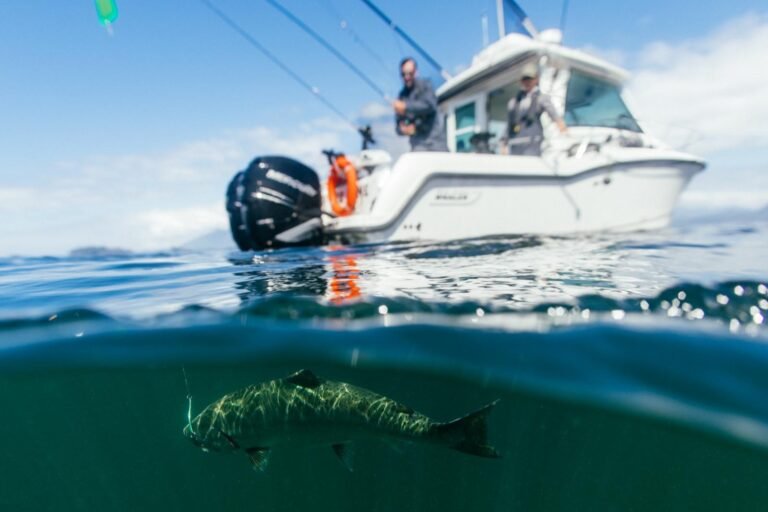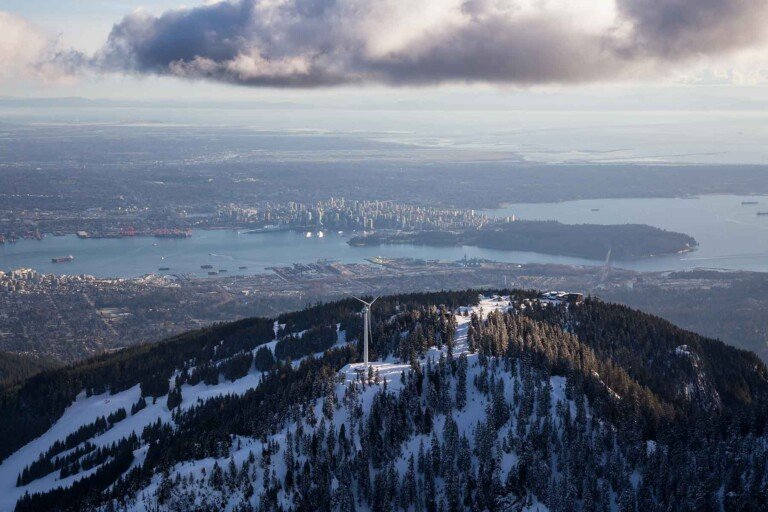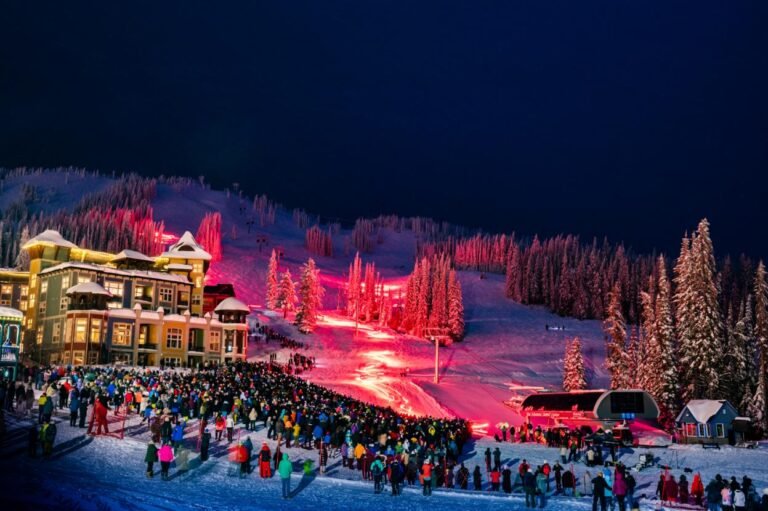Hiking in the Thompson Nicola
Wells Gray Provincial Park is laced with hiking trails, ranging in length from 1 to 15 miles (1.5 to 24 km) one way. The Helmcken Falls Rim Trail (easy; 5 miles/8 km return) leads from the Dawson Falls Campground on Clearwater Valley Rd and follows the rim of the falls for much of the way. The thunder of the falls grows louder as you approach them, gradually drowning out all other sounds. In winter this trail is open for snowshoeing and cross-country skiing for those who wish to see the falls covered with a thick mantle of ice.
Much of the park’s topography is the result of glacial erosion and volcanic activity. One of the best hiking trails from which to observe this is the Pyramid Mountain Trail (moderate; 8 miles/13 km return), which leads to the summit of Pyramid Mountain, from where hikers enjoy spectacular views of the Premier Ranges across the north end of the park. The mountain itself exhibits fascinating volcanic characteristics. Geologists believe that Pyramid Mountain built up gradually beneath a thick glacial sheet as magma erupting beneath the ice was chilled and shattered into tiny fragments by cold water and ice. Over time, these fragments accumulated around the vent to form a mound-shaped structure.
Hikers looking for an opportunity to journey deeper into the park should follow the Horseshoe Falls Trail (strenuous; 21 miles/34 km return), which shares the Pyramid Mountain Trail and then continues beyond to Horseshoe Falls. Wilderness campsites are located at the 5-mile (8-km) point and at the top of Horseshoe Falls. The well-marked trailhead is located about 3.75 miles (6 km) north of the park entrance on the east side of Clearwater Valley Road.
Some of the best routes in the park feature lovely alpine hiking, with various huts to stop at along the way. (In winter, there is hut-to-hut skiing on these same trails.) Good books to consult include Nature Wells Gray by Goward and Hickson, and Exploring Wells Gray Park by Roland Neave.
Several challenging hikes are possible in Mount Robson Provincial Park, as well as many easy walking trips: there’s a hike for every skill level here. If you want a two-day hike past glaciers and waterfalls, take the very well-known and popular Berg Lake Trail (moderate; 27 miles/44 km return). The trailhead is at the parking lot beside the Robson River, close to the visitors centre. The trail leads to Kinney Lake and the base of Mount Robson, skirts the lake, and enters a valley heavily dotted with spectacular waterfalls and more than 15 glaciers before reaching Berg Lake, at an elevation of 5,341 feet (1628 m).
From here the trail continues through Robson Pass into Jasper National Park. It’s possible to make a loop via the Berg Lake and Moose Rivers Trail, a distance of about 65 miles (105 km), in approximately seven days. This route is particularly rigorous; only attempt it if you’re a highly experienced backcountry hiker. (Note: The first half of the Berg Lake Trail as far as Kinney Lake is accessible by mountain bike. Some keeners have been know to bike to Kinney Lake and then hike to Berg Lake from there, making it back to the parking lot before sundown.)
Several other hikes are rewarding. The eastern portion of the park has trails ranging from easy to difficult. Some of the more challenging are Mount Fitzwilliam (moderate; 7.5 miles/12 km return to Rockingham Creek wilderness campground; 13.5 miles/22 km return to alpine lakes); Moose River Route (strenuous; 87 miles/140 km return; allow six days); Fraser River Route (strenuous; 30 miles/50 km return); and Yellowhead Mountain Trail (moderate; 10.5 miles/17 km return). The Mount Fitzwilliam Trail starts at Yellowhead Lake and continues for 4.4 miles (7 km) to the designated campsite at Rockingham Creek. An additional 4.3 miles (6.9 km) takes hikers up Fitzwilliam Creek to the wilderness campsite and several day-hike opportunities. All hikers should check with park staff regarding the condition of trails before starting off; hikers entering Jasper National Park must register with park officials beforehand.
For the experienced backcountry hiker, Hamber Provincial Park offers extremely beautiful scenery in a wild and rugged locale. Tucked into the midpoint of Jasper National Park on the British Columbia-Alberta border, Hamber is accessible by foot only. (Hwy 93 in Alberta is the nearest highway.) There is a difficult 14-mile (22.5-km) hike in from Sunwapta Falls in Jasper, or you can reach the park by floatplane to Fortress Lake. At high elevation and with pristine wilderness, this park has excellent angling opportunities and is prime grizzly and black bear country.
A challenging 8-mile (13-km) round-trip hike in Mount Terry Fox Provincial Park leads into the alpine zone from its trailhead north of Valemount. Staggeringly impressive views are everywhere along this route. Mount Terry Fox is located 6 miles (10 km) north of Valemount off Hwy 5. It’s best to visit Trophy Mountain‘s self-guided trail, ‘To the Treeline and Beyond’ (easy; 1.2 miles/2 km return) between the end of June and mid-August to see the wildflowers that carpet the subalpine meadows here. A lengthier hiking trail leads from the meadows to views of the Shuswap Highlands from Skyline Ridge (moderate; 7.5 miles/12 km return).
Sudden changes in the weather occur even in summer, so wear layered clothing and bring waterproof gear (and sunscreen, just in case). This trail is documented in a charming brochure. Pick up a copy from the BC Parks office in Clearwater before heading out. The trailhead in Trophy Mountain Recreation Area begins just east of Spahats Creek Provincial Park off Clearwater Valley Road. Follow gravelled Road 80 east of Clearwater Valley Road for about 1 mile (1.6 km), then turn north on Road 10 for almost 2 miles (3 km), then turn east on Road 201 for 2.7 miles (4.4 km) to reach the trailhead parking lot.
In the Shuswap Highlands region east of Kamloops, hike the gentle trails in Niskonlith Lake Provincial Park in fall to see a host of migratory birds.





